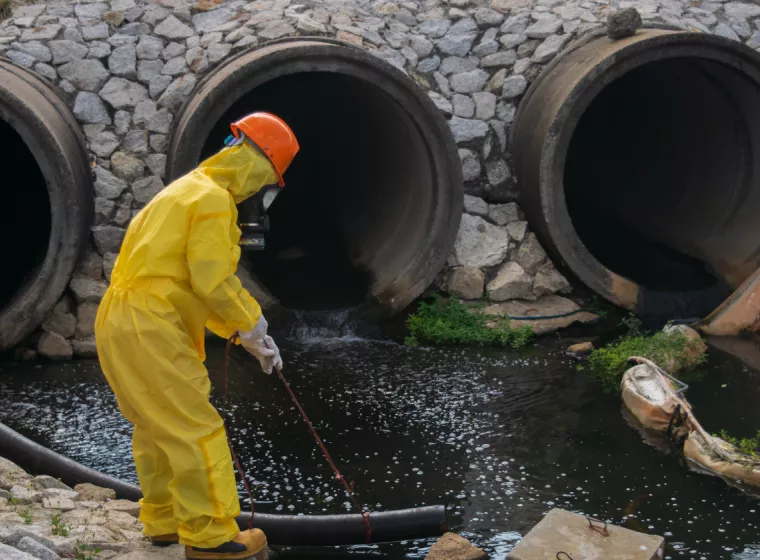April 17, 2024
First national PFAS regulation increases potential liability for water utilities, wastewater facilities, and industrial dischargers
On April 10, the Environmental Protection Agency finalized the National Primary Drinking Water Regulation (NPDWR), setting new maximum contaminant levels (MCLs) for five individual per- and polyfluoroalkyl substances (PFAS): PFOA, PFOS, PFNA, PFHxS, and HFPO-DA (known as GenX). The new MCLs are 4 parts per trillion (ppt) for PFOA and PFOS and 10 ppt for PFNA, PFHxS, and HFPO-DA.
In addition, the final regulation includes a hazard index level of 1 for regulating mixtures of two or more of the following four PFAS: PFNA, PFHxS, HFPO-DA, and an additional PFAS known as PFBS.
Implications of new PFAS MCLs for drinking water utilities
While this action starts a three-year clock to begin monitoring by 2027 and a five-year clock to meet the new MCLs by 2029, many utilities have been preparing for PFAS MCLs for years. For example, many drinking water utilities have been monitoring 29 PFAS — including all five of the individual PFAS included in the NPDWR and PFBS — in treated water under EPA's Unregulated Contaminant Monitoring Rule Five (UCMR 5) since 2023.
EPA estimates that "6-10% of regulated drinking water systems will have to take action to reduce PFAS in their drinking water in accordance with the PFAS NPDWR" at an annual cost for compliance of $1.5 billion. However, the American Water Works Association has estimated the annual cost of meeting the 4-ppt MCLs for PFOS and PFOA at $3 billion to $5 billion due to the complexities involved in PFAS monitoring and removal at such low levels.
Treating PFAS in drinking water supplies may also result in the generation of PFAS-containing waste, for which disposal or treatment options — and costs — remain in flux. A recent EPA proposal to classify certain PFAS as hazardous substances would likely impact disposal costs.
The sources of PFAS in drinking water supplies are numerous and complex, so limiting PFAS in water supplies via source control is difficult. Drinking water utilities are being encouraged to look for the sources of PFAS to limit PFAS concentration at the point of intake. Multiple studies have analyzed broad areas to identify categories of dischargers and locations. State regulations have also limited the use of PFAS in various consumer products, which may also limit future sources of PFAS to water supplies.
Potential upstream effects of EPA's new PFAS MCLs
The impact of the MCL rulemaking goes beyond drinking water. This rule has numerous other environmental implications, which may result in a series of additional regulatory and enforcement changes.
Specifically, EPA has previously encouraged states that are authorized to issue National Pollutant Discharge Elimination System (NPDES) permits to add PFAS to discharge restrictions, thereby regulating point sources that discharge pollutants to waters of the U.S.
While these new MCLs were developed under the Safe Drinking Water Act (SDWA) and apply to treated drinking water, there may be pressure to apply these MCLs to applications beyond their actual scope, for example, to set cleanup levels for impacted sources of drinking water. As a result, the final NPDWR is likely to impact wastewater facilities and industrial dischargers because the new MCLs have the potential to:
- Be applied to derive effluent limitations in NPDES permits
- Be used to determine pre-treatment permit requirements
- Complicate the use of biosolids for beneficial reuse
- Be used as cleanup levels for impacted drinking water supplies
What Can We Help You Solve?
Exponent closely monitors evolving PFAS regulations to help clients respond to changes quickly. Our breadth of PFAS expertise ranges across analytical chemistry, treatment technologies, NPDES permitting, and chemical forensics. We help manufacturers, utilities, and water and wastewater agencies identify and assess PFAS throughout their operations to support regulatory compliance.
Insights













